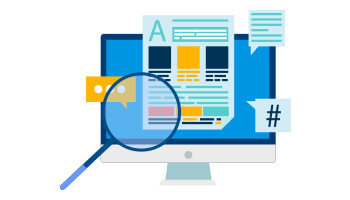When it comes to digital marketing and online ads, Google is still one of the most sought-after advertisement platforms that efficiently generate quality leads and target customers for both B2C and B2B enterprises. B2C campaigns are generally straightforward advertisements targeting the end-customers or individual customers directly. On the contrary, B2B Google Ads target other businesses, where the average sales cycle is around 102 days, due to the involvement of multiple decision-makers, prolonged commitments, and challenging work-scope.
Although the ad campaigns are simple to create and set up, implementing an effective B2B Google Ads strategy that performs well in terms of conversion and CPC is a different ball game altogether. But worry not; if you are a new e-commerce enterprise struggling with creating Google Ads for efficient B2B lead generation, here are eight practical tips to generate high-quality B2B leads with Google Ads –
1. Extensive Keyword Research to Understand the Business and Industry


When it comes to planning a productive online ad campaign, picking up the right set of keywords must always be prioritized. Keywords are phrases that will communicate the intent of your campaign to Google to generate specific targets. Hence, it is imperative for a company’s marketing and sales team to brainstorm to find the right set of keywords.
To start with, understanding the nature of the product/service you intend on selling and gaining a deep insight into the nature of the business and industry of your prospective clients are exceptionally important. Only then can you have an idea of the keywords your prospective clients will probably type on Google search to meet sellers. You need to be well acquainted with the jargon and acronyms prevalent in the industry to create a strong B2B Google Ads strategy.
Generally, there are four categories into which keywords can be grouped –
- Generic – Keywords that speak directly about your products or services
- Branded – Keywords that speak about your brand or carry your brand name
- Competitor – Keywords that your competitors use
- Related – Keywords that speak about your industry and the industry your business caters to.
A healthy balance of all these categories will help you generate leads and effective targets.
2. Filter out Negative Keywords


The inability to figure and filter out negative keywords is some valuable pennies wasted. Negative keywords generally comprise a generic word or phrase that redirects your ads to the wrong customers. For example, if you are a farming enterprise based in Pune looking forward to selling your fresh produce wholesale, keywords such as “fresh produce supply in Pune” or “Fresh vegetables in Pune” may redirect your ads to people who are looking forward to buying fresh vegetables in retail, which is not your agenda. In such cases, your CPC might increase, but your return on investment becomes very low due to the lack of conversions due to negative keywords.
The trick while picking up keywords is to stay as close to your target group as possible. Listing out negative keywords also works wonders while brainstorming ideas.
3. Create Tailored Landing Pages for Each Ad Group


Often digital marketers redirect their ad copies to the homepage or a common landing page. Now, imagine three separate ad copies are targeting three different sets of customers but with a single landing page. Will this Google Ads B2B lead generation strategy see many conversions? Of course, not. This is because these three ad copies targeted three different sets of customers looking for separate products or services. However, in this process, you end up losing money.
Here are a few tips for tailoring excellent landing pages that see your leads convert into customers –
- State your proposition clearly
- Highlight your offering or value proposition in bold, catching the attention
- Ensure that your Call To Action is properly visible
- Make your form fields crisp and relevant
- Ensure that the content of your landing page matches your ad creative
4. Do Smart Campaign Structuring


Many e-commerce enterprises create Google Ads for B2B lead generation keeping in mind just the service or the products they offer. Although this is not a bad idea, it is too common to help you stand out in the crowd. Instead of focusing right on the product or service, you could amp up your campaign strategies by concentrating on the features of the product/service, its benefits, or focusing on your industry targets.
By denouncing the prevalent modes of campaign structuring for a smarter alternative, you can target more specific audiences, eventually generating more leads and seeing better conversions. In short, smart campaign structuring can help you create more personalized ads for your prospective customers.
5. Get Optimized Ad Copy


An ad copy can never be a dumping ground for all your ideas. In fact, an efficient ad copy must be able to present your ideas minimally yet clearly to your prospective customers. Here are some brilliant practices that can be followed to get a well-optimized ad copy –
- Acknowledge the problem – Does your product or service provide a solution to any problem? If yes, showcase it before you speak about the product to gain the positive attention of your customers.
- Keep It Minimal – No one likes to read lengthy ad copies. Hence, it is always better to do away with the extra fluff and jump straight into the product or service in your ad.
- Show Your Credibility – If you have got any awards or good reviews or mentions anywhere, don’t forget to enumerate some of them in your copies. With many businesses offering similar products and services, showcasing your credibility as a business and problem solver becomes vital.
- Use Proper Extensions – When used thoughtfully, extensions and hyperlinks can help prospective customers decide their next move. Links to relevant pages, social media, calling extensions, maps, etc., can be of immense importance.
6. Change Bid Adjustment for Devices


Imagine if you have already run an ad campaign for a few days, it has been generating new leads, and you wish to run it further for a few more days. In such a scenario, you can check your Google Ads analysis for the types of devices most of the leads are using. For example, you find most of your leads using mobile phones to click on your ads, you can increase your Click per Ad bidding amount on mobile devices while decreasing the amount on computers. In this way, you can reap the maximum benefit from your investments and attract positive revenue.
7. Leverage Capabilities of Geotargeting Search Ads
The world of online advertising has changed dramatically over the years. Now, it has become convenient to target a specific set of audience from remote locations effectively, in order to narrow down the focus on a specific type of customer. Geo-targeting ads is the most sophisticated way to implement such strategies. Geo-targeting ads can help you reach specific geographics, which is an effective strategy to create brand awareness. Google Ads let you configure advertisement settings according to countries, radius around location, areas within country, and location groups that include business locations, interests, and tiered demographics. Here are some useful tips for geo-targeting campaigns.
- Discover location intent by search history
- Target areas according to needs
- Exclude locations where your target audience will not be
- Analyze consumer behavior from past locations viewed
- Use location-specific keywords
- Adjust bids according to specific areas
8. Use Remarketing Effectively
Remarketing or retargeting strategy is one of the best approaches that is missed by many marketers. Since the sales cycle is effectively longer in B2B, showing people different ads repetitively can help you gain an edge. Remarketing offers several advantages
- Brand Building- Visual remarketing banners and videos that are shown to the audience repeatedly gives you an opportunity to build your brand from different perspectives.
- Reword your message- Sometimes, your ad couldn’t do the expected job in the first attempt. However, if you were to reword the same ad or even offer something less salesy, you could get a breakthrough there.
- Remarketing Ad clicks are cheap- Another reason remarketing is an effective strategy is because showing the same ads again and again to the audience means you have to pay less for each of those clicks. This is typically because Google knows this person has already expressed interest in your site and thus, does not consider your ad to be a competitive one.
9. Make Most of Discovery and YouTube Campaigns
Another unique approach to generate high-quality leads is to leverage Discovery and YouTube campaigns. What makes them so unique? It’s their ability to create Custom Intent audiences.
While other ads allow us to create custom audiences, Discovery and Youtube ads enable marketers to create Custom intent audiences that are created with the help of the same search terms explored on Google.
Google Discovery Ads are cost-effective, with advanced audience creation. YouTube campaigns are highly targeted with granular targeting that enable marketers to reach the desired audiences. With YouTube, you can target your audience by
- Demographics
- Customer Match
- Affinity Audience
- Topics
- Video Remarketing
- Custom Affinity Audience
YouTube advertising is also cost-effective and helps you connect with the right audience.
Conclusion
The right B2B Google Ads strategy can indeed drive home some great sales and revenue. However, in many cases, miscalculations on the part of the e-commerce enterprises simply go on to direct funds towards Google without generating any lead or conversion. When you have a good B2B marketing agency on your side, targeting the right audience and transforming leads into customers become simple and swift.
At Amura Marketing Technologies, each business is provided with tailor-made and personalized digital marketing solutions that vouch for better conversion rates and help in garnering more revenue from Google Ads.
